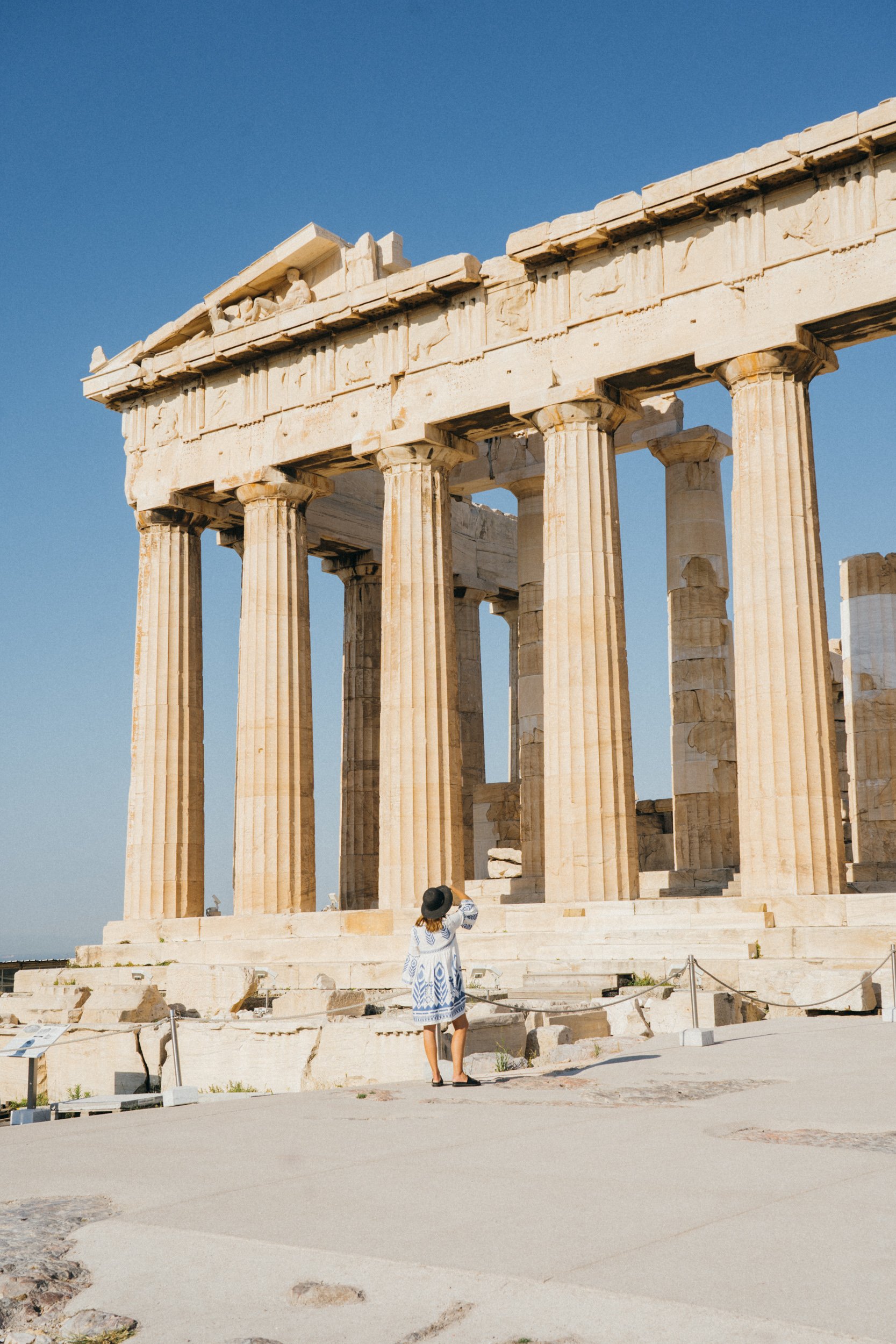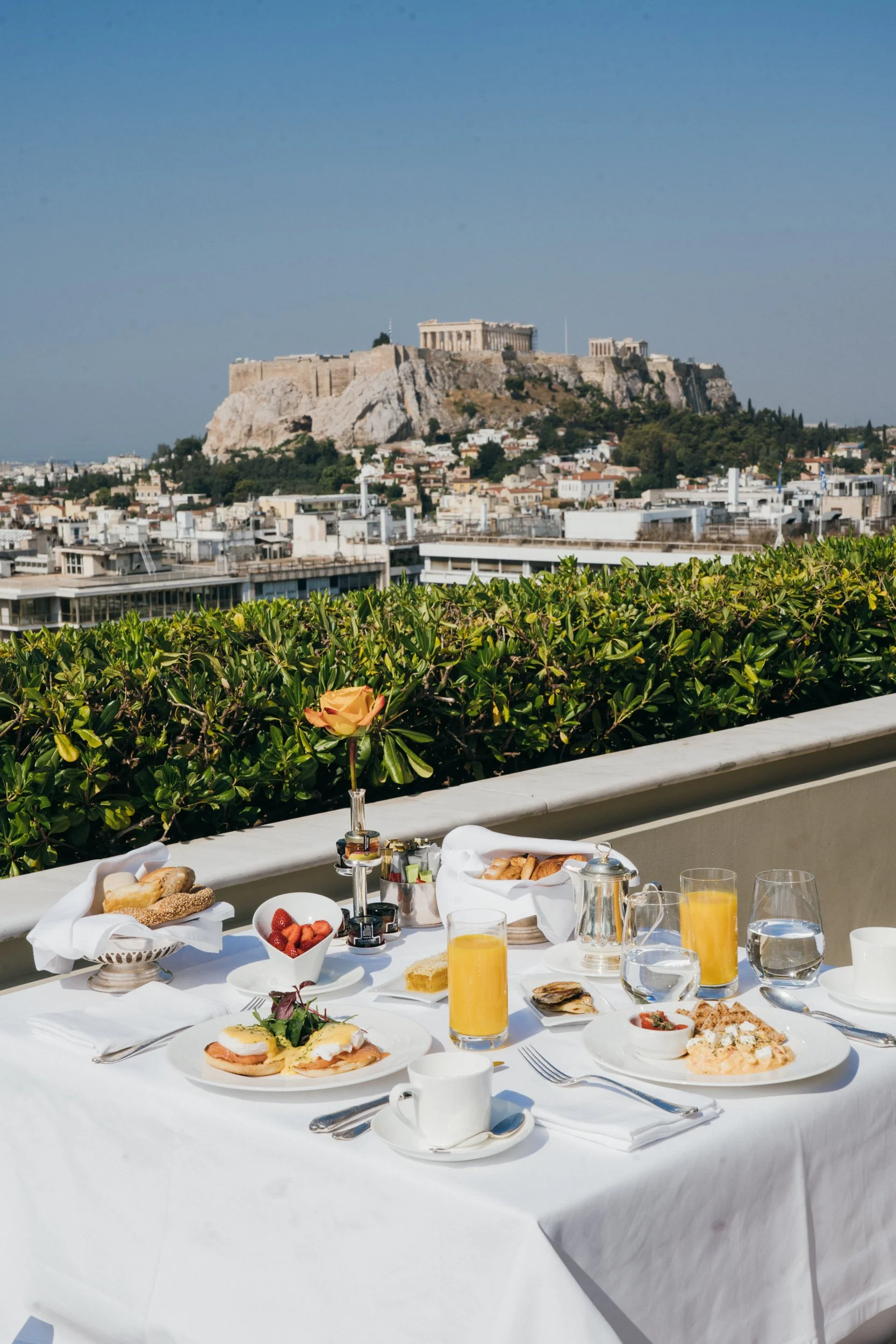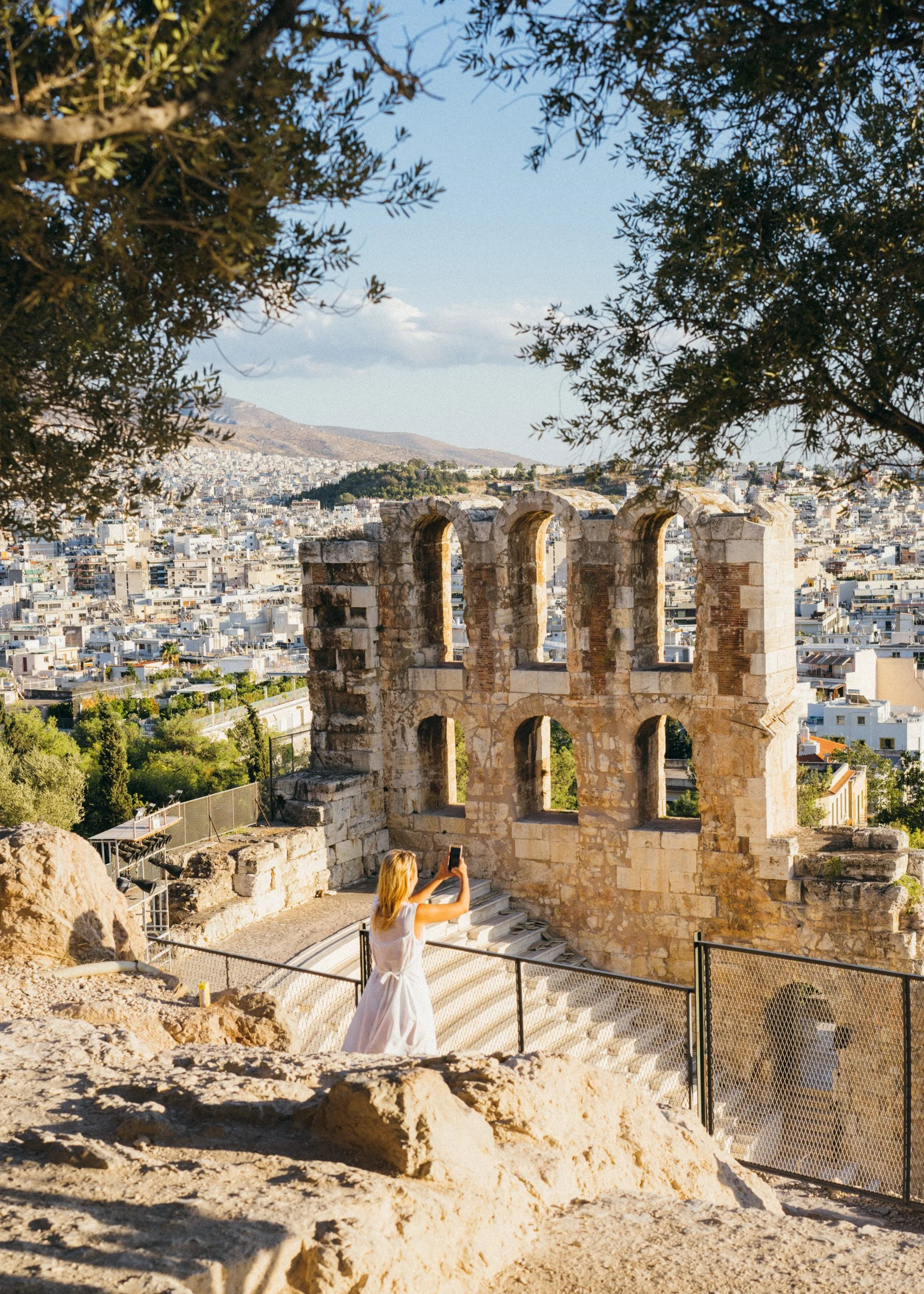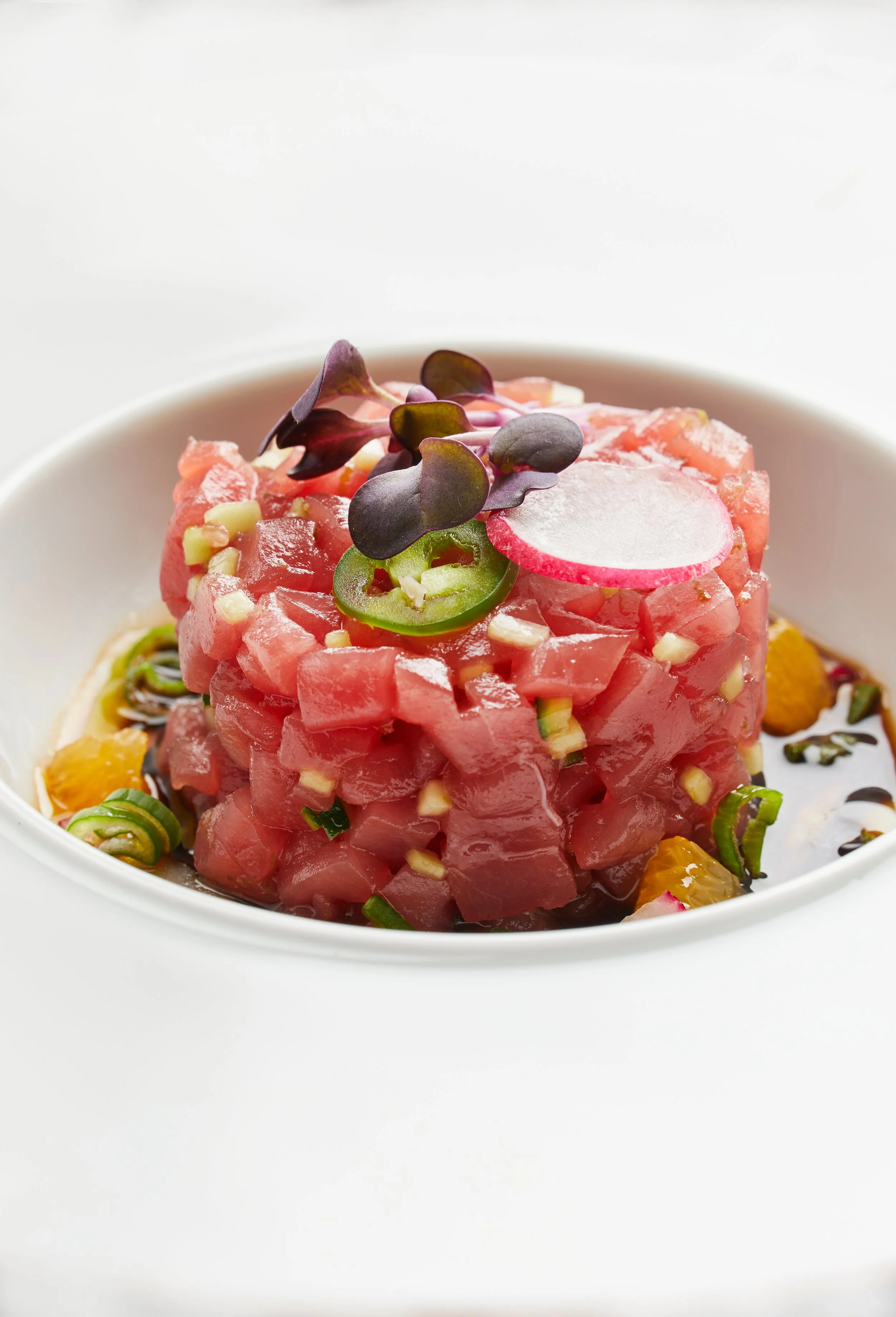
Three Perfect Days Greece
Hemispheres cover story, August 2021
The cradle of Western Civilization. The birthplace of democracy. Greece has claimed the best taglines for, well, ever, but those truths only scratch the surface of what the country has to offer now. In March, the nation celebrated the 200th anniversary of its battle for independence from the Ottoman Empire, a milestone that also feels like a rebirth, as Greece emerges from a decade of financial turmoil. This sense of rejuvenation is palpable in Athens, where new arts institutions prove just as enticing as ancient archaeological sites, and where young chefs are redefining what Greek cuisine can be, without forsaking their heritage. The Greek islands, meanwhile, are more alluring than ever, and Milos, in particular, is seducing visitors with its siren song of serenity and otherworldly beauty. Heed the call.
Photo by Marco Arguello
Photo by Marco Arguello
Day 1: Cultural treasures both ancient and modern in Athens
I start my first morning in Athens with a conundrum. I can’t decide which is more impressive: the view of the Acropolis I’m gawking at from the rooftop restaurant at the Hotel Grande Bretagne, or the bowl of yogurt and honey I’m devouring. Another bite (so creamy!), another look (so iconic!). Close call, but the Acropolis wins. The name means “high part of the city,” and the craggy hill does indeed tower over Athens’s rooftops, shouting its glory to the gods—and the tourists. Seeing the Parthenon in 3-D, and not as a picture in one of my son’s mythology books or even the replica in Nashville that I grew up visiting, is a bit overwhelming.
So, of course, I want to get closer. I meet Dimitris Katsoulakos, an affable history teacher turned tour guide for Be a Greek Travel Experiences, in the hotel lobby, and we’re off. We wander through Plaka, the neighborhood at the base of the Acropolis, where souvenir shops sit near 11th-century cathedrals, and work our way past the remains of a Roman agora. We stop in the shade of an olive tree by Mars Hill, a rock outcropping on the northwest side of the Acropolis that was home to a court in ancient times. “The Apostle Paul preached Christianity here,” Katsoulakos says. “Athenians ignored him totally. A new god? We have so many here!”
The Acropolis, after all, is dedicated to Athena, the goddess of wisdom and the city’s namesake. As the myth goes, she fought Poseidon for naming rights. He plunged his trident into the earth and gave the people saltwater; they weren’t impressed. She stuck her staff into the earth and out popped an olive tree; they declared her victorious. (The Greeks had their priorities straight.) Then, between 450 and 400 B.C.E., they went on a building spree like no other.
We climb the steps of the Propylaea, the entrance to the sanctuary, and I start snapping photos like my life depends on it: the Temple of Athena Nike, the Erechtheion and its caryatids, and, finally, the Parthenon, in all its Doric, balanced beauty. As much as I want to disregard the facts, I know this is mainly a recreation. The Turks conquered Greece in the 1400s and built an entirely new city atop the Acropolis, turning the Parthenon into a mosque. When the Venetian army came in 1687, they were in for a surprise. “The Turks hid gunpowder inside it … and boom!” Katsoulakos explains. “That’s when the big destruction happened.”
After the Greeks won independence in 1830, they rebuilt. In many ways, they’re still rebuilding. Cranes flank one side of the Parthenon, with piles of marble waiting to be positioned. But none of that gets in the way of the majesty. As a Broadway fanatic, I get a little choked up looking at the Theater of Dionysus, where Euripides, Sophocles, and Aristophanes staged their first plays. Why was Dionysus the god of both wine and theater? Katsoulakos has his theories. “When you have wine, you feel good, you have the courage to be someone else. What is that? Acting! The art of drama was born here because Athenians were drunk!” He switches to a stage whisper: “But we don’t say that very loudly.”
There’s even more to see in the Acropolis Museum: 2,000-year-old children’s dolls; gold body-part sculptures offered to the god of medicine, Asclepius, by people in search of healing; the original caryatids; and primitive ovens that look similar to mini Weber grills.
Speaking of ovens, I’m starving. I pop into the gift shop and pick up an Apollo Playmobil toy for my son, say efharisto to Katsoulakos, and hop a cab to Cookoovaya, which is in a neighborhood the locals simply refer to as “Hilton,” because, yes, there’s a big Hilton hotel at its center. I settle into a table on the patio and take in the giant painting of the restaurant’s original chef-owners—all stars on the Athens food scene—hanging over the bar inside. Cookoovaya means owl in Greek, which is also the symbol of wisdom, and the focus here is on “wise cuisine.”
Fish tartare at Cookoovaya
On the recommendation of consulting chef Florian Ogici, I go for the grilled octopus and pureed fava appetizer, and then the special, a whole scorpion fish, half of which is baked in tomato sauce and half of which is served in four different raw preparations: ceviche with tomato and avocado, tartare with thyme and yuzu, sashimi with ginger and apple, and carpaccio with spring greens. “We try to use the most simple ingredients and not dress them up too much,” Ogici says. “We want to let the fish be the flavor.” Mission deliciously accomplished.
My next stop is the Stavros Niarchos Foundation Cultural Center, just a few miles south of the city center in a neighborhood called Kallithea. The complex, designed by the Renzo Piano Building Workshop and completed in 2016, includes the national library and opera and a 42-acre park. Outside the glass-walled library (a veritable crystal palace for books), I meet the SNFCC’s marketing and communications director, Athena Balopoulou. After a peek into the opera house, we head up to the library’s roof, which, in a feat of architectural genius, is actually the start of a man-made hill that slopes down to the park. “Kallithea means ‘good view,’” Balopoulou explains. “Renzo Piano was like, ‘I don’t get it—where’s the view?’ So he created an artificial hill to see the sea.”
There’s lots to see here: the largest public Mediterranean garden in the world, an outdoor exhibition of the Greek sculptor Takis’s work, and, soon, a zero-waste, farm-to-table restaurant named Delta.
I’m sure the sunset is beautiful from here, but I need to go back to my hotel to change for dinner. I’m going to CTC, a tasting-menu spot from one of Athens’s hotshot young chefs, Alex Tsiotinis, that just reopened in a new space in the hip Kerameikos neighborhood. A dress is in order.
Refreshed and fancified, I hail a cab to the restaurant, and soon I’m sitting in a leafy garden, sipping a glass of savatiano and dipping a nugget of sourdough topped with feta cheese into Greek salad-essenced water and oregano granita. My menu labels the meal a “journey,” and it definitely is, wending its way from a dish of marinated mackerel and mustard ice cream that looks just as stunning as it tastes to a playful trompe l’oeil “peach” dessert complete with a chocolate pit.
It’s late, but my inner East Coast clock tells me to keep going, so I head to Cine Thisio to take part in an Athens summer tradition: an outdoor movie. Tonight’s film is Godard’s Vivre Sa Vie, and I grab a seat just before the opening credits start. As stunning as Anna Karina is, I can’t help but be distracted by a greater beauty to the left of the screen: the Acropolis, glowing gold in the dark sky. It wins again.
Day 2: Hike Up Lycabettus Hill and Visit Milos’s Most Beautiful Beach
I have only another half-day in Athens before my flight to Milos, and I want to make every second count, so not long after Apollo and his sun chariot have taken to the sky, I start a hike up Lycabettus Hill, the highest point in the city. It’s already hot out, and as I pass, literally, a turtle toddling up the paved path, I wonder which of us will reach the top first.
When I finally make it to the observation platform, there are only two other tourists here—no turtle. I take in the sprawling view of the city, which stretches all the way to the sea, and then pay my respects inside the tiny white-washed Chapel of St. George.
There’s a restaurant up here, too, but just down the hill, in the posh neighborhood of Kolonaki, there’s a morning bun with my name on it. At Kora, a sourdough and viennoiserie bakery that opened in December, I meet Maria Alafouzou, who handles the business, and Ianthi Michalaki, who handles the bread. “Two young women running a business like this is very rare,” says Alafouzou. Michalaki nods in agreement. “A woman baker?” she adds. “No way. They think we’re going to open a cupcake shop.”
The duo connected two years ago, when they both moved back to Athens—Michalaki had been working in fine-dining restaurants in Copenhagen, and Alafouzou had been a writer and editor in London—and couldn’t find the kinds of bread they wanted. “This is revolutionary in Greece,” Alafouzou says of the long fermentation process they use. “Very few make sourdough, and if they do, it’s very traditional, only mixing by hand in a wooden bucket. But we’re young, and we can take the best of science and innovation.”
I savor each bite of my cinnamon-y pastry as I saunter past the National Garden and Presidential Mansion, where I watch the Evzones—guards dressed in traditional uniforms complete with intricately pleated kilts, embroidered waistcoats, pom-pom-topped shoes, and tasseled caps—put London’s Beefeaters to shame with a choreographed, slow-motion kick step that seems to defy gravity.
I arrive at the Basil and Elise Goulandris Foundation, a new contemporary art museum encompassing the collection of its late namesakes, just as the doors are opening. “They had always wanted to have this museum, so I guess they’re pleased right now,” visitor experience guide Konstantinos Kormas says of the patrons, who owned works by El Greco, Cézanne, Picasso, and Greek artists such as Sophia Vari and Nikos Hadjikyriakos-Ghika. “They appreciated good art in any form.” Among those forms are three portraits of Elise herself, my favorite being Fernando Botero’s take on her as a plump lady in a fiery red flamenco dress.
After this feast for my eyes, I head back to Syntagma Square and my hotel, where I meet Carolina Doriti, a restaurant consultant, TV producer, writer, and guide with Culinary Backstreets, to eat my way through the city. First up: pork souvlaki. “We don’t have lamb souvlaki in Greece; it’s a big misconception,” Doriti says as she leads me into Kostas, a tiny storefront that I would have completely missed otherwise. The pork, cooked on a stick and showered in parsley, is nestled in a fluffy pita and served with tomato and yogurt—simple and utterly delicious.
Our next stop is at Mitropolitikon, in Plaka, for baklava, studded with pistachios and sticky with honey.
“Does it travel well?” I ask the shopkeeper. “Oh yes,” he replies, packing up six big pieces for me to take home to my family.
When Doriti discovers I have yet to walk through Anafiotika, “the last unfixed part of Plaka,” on the northeast side of the Acropolis, we take a detour so I can see the maze-like neighborhood and its tiny whitewashed houses. “When the Greek state had to be rebuilt in 1830,” she explains, “men from the island of Anafi came to restore the Parthenon, and they built a secret village here in exactly the style of their island.”
Back to eating: We nosh on a koulouri (a large, skinny cousin of a sesame bagel) from Koulouri of Psyrri and then stop at Ta Karamanlidika tou Fani, a deli that first opened across the street in 1935 and expanded here in 2014. “We have so many cheeses in Greece, you have no idea,” says Doriti, who proceeds to have me try every single one, plus a variety of cured meats. We sit in an inner courtyard and wash it all down with a glass of Tinaktorogos, a wine that apparently was referenced by Homer, which means it must be good. “The more we go back to the roots of cuisine,” Doriti says, “the more contemporary we are.”
After a Greek coffee—mixed in copper cups and heated in sand, the traditional way—at Mokka and a quick spin through Varvakios Market to ogle the octopi and eels, it’s time for me to dash. I retrieve my bag and head to the airport, where I take my return COVID test in record time and then board an Aegean Airlines island-hopper to Milos.
Why Milos? Choosing just one Greek island to visit is like picking just one puppy on Petfinder. How do you know which is the right one? I was wooed by Milos’s unrivaled beauty and its relatively low profile (compared to, say, Santorini or Mykonos). Also, while ferries might be a more popular way to get to the Cyclades, I could get to Milos on a 20-minute flight, rather than a four-hour boat ride.
At 4:30 p.m., less than an hour after I took off, I park my MilosRent car in the lot at Sarakiniko beach. Moments later, I’m walking along a lunar landscape and wading into the Aegean. Milos is a volcanic island with, no joke, 84 beaches, but Sarakiniko is its most famous, an Instagrammer’s dream of undulating white rock that beautifully sets off the cobalt blue water. It’s not the best for sunbathing (volcanic rock isn’t exactly the softest surface), but it’s great for watching daredevils dive from the cliffs.
It’s only a 10-minute drive to the town of Pollonia, where I check into the serene Melian Boutique Hotel & Spa. That vision you have of a Greek island hotel? This is it. I open the doors to my private terrace, and the white eyelet curtains billow in the breeze, framing the sea. It’s almost too perfect. I feel like everyone besides me must be here on their honeymoon.
After a dip in the hot tub and a shower, I’m ready for dinner. I drive to the port town of Adamas, to O! Hamos, which translates roughly to “being crazy and having fun,” and score a little table under a latticed roof dripping with bougainvillea. I’m charmed by the handwritten menu and the custom terracotta pottery— even my wine comes in a little pottery jug that I wish I could take home. My server tells me I have to try some cheese, since it comes from the owner’s farm, and I double down by ordering the eggplant salad with fresh goat’s milk cheese and the lamb baked with feta in parchment. He looks at me, shakes his head, and says, “Are you sure you can eat that much?”
“No,” I tell him, “but I’m going to try.”
Day 3: Sail Around Milos and Celebrate Dionysus at Armenaki
I don’t know how I’m going to go back to eating “Greek” yogurt in America after this trip. This morning, sitting on my terrace, staring at the sea, I enjoy the real thing, with plum spoon sweets (fruit that has been preserved with sugar but left to retain its texture), alongside another traditional dish, strapatsada, a tomato, egg, and feta scramble that I will most definitely be making when I get home.
I’m putting myself in Poseidon’s hands today, and exploring the island’s myriad beaches with Thalassitra Sailing. I arrive at Adamas Port early, which gives me time to try on hats at a stand near the water. “Belissima!” cries the owner when I put on a white, wide-brimmed Jackie- O-goes-yachting number. Sold, for 14 euros.
Finally it’s time to board the Leloudo, a double-masted sailboat, along with about 20 other tourists and four crew members. Our fearless leader, Lou Dounas, is a sun-kissed 20-something with a smile that could launch a thousand (more) ships. Even more stunning is her ability to speak the language of just about every tourist on board.
As we sail west, Dounas offers an account of Milos’s mining past and present. “As we are a volcanic island, we have a lot of minerals,” she says, raising her voice above the wind. The oldest? Obsidian, which has been mined here since 8000 B.C.E. Manganese was harvested here until the late ’20s, sulfur until the ’50s. Now, the three big mineral reserves are bentonite, perlite, and kaolin. Bentonite, Dounas explains, is used “by the ladies” in powders and blush, and it’s also an ingredient in plaster. “In Greece, when a lady wears a lot of makeup, we say she’s plasterized.”
We anchor near Kalogries beach, and the crew pulls down the ladder. “You have to swim,” Dounas tells us, seeing our skepticism about the water temperature. I jump in and am shocked by the cold, but a rush of exhilaration warms me up.
Our next beach, Kleftiko, is a showstopper—white cliffs and caves carved by time and wind and sand. “Kleftiko comes from the Greek word kleftis,” Dounas explains. “Do you know what other word comes from this? Kleptomaniac. Because we used to have pirates here.” We break into groups and take turns exploring the caves on a skiff. It’s immediately clear why pirates claimed this area: It’s easy to stay hidden and spot your next target at the same time.
So many beaches, so little time. We pass Tsigrado, which from land can be reached only by climbing down a rope and a rickety ladder; Paleochori, where we done fins and swim into a cave where sulfuric hot springs heat the water; and the uninhabited island of Polyaigos, which has the bluest water imaginable. “They call this the area of the blue waters… because of the blue waters,” Dounas offers, with a wink.
Somewhere in between all this, we have a full-on feast—Greek salad, baked eggplant, orzo with squid, a zucchini version of strapatsada—that the chef, Niko, magically prepares in the closet-size below-deck kitchen.
It’s later than I expected by the time we pass Klima, a picture-postcard fishing village that was Milos’s first capital, and turn toward Adamas. Near Klima are catacombs that date to the first century C.E.; it’s also, Dounas reminds us, “where Aphrodite was found.” She means the Venus de Milo, which was discovered in the ruins of an ancient theater in 1820.
Upon docking, I drive to Pollonia and Kostantakis Milos Cave Winery. Petros Mallis, the son of owner Kostas, leads me to the vineyards, pointing out the different grapes, from assyrtiko to monemvasia, which thrive in the volcanic soil. “We have been making our wine for many decades, but it was for the family,” he says. “It was my father who decided to make it official.” That happened in 2012, and the winery now produces 15,000 bottles a year, all of which are sold on Milos. “Most of our customers and the restaurants, we know them,” Mallis says. “We don’t have to sweat that much commercial stuff.”
In the cave, which served as a shelter during World War II and now houses the tasting room and production facility, he pours me samples of a citrusy assyrtiko and a rosé blend that has just a touch of sweetness, thanks to a bit of muscat. Stray cats wander in and scratch at Mallis’s leg. “They’re hungry,” he says.
“Are they yours?” I ask.
He shrugs. “There are vipers on the island. The cats catch the vipers.” Best reason to have cats I’ve ever heard.
I head back to the hotel to freshen up, then walk down the hill to the center of Pollonia to continue my Dionysus-approved evening at Armenaki, a waterfront restaurant with the tagline “Explore the Greek wine.” I know I’m in for a great night when the gregarious owner, Antonios Mavrogiannis, asks, “Do you want to order from the menu or do you want me to create a menu for you?”
He starts me off with a lovely salad of spinach and arugula from the restaurant’s garden, along with pears, prunes, sesame seeds, and a local cheese called mizithra, paired with a crisp white from the Peloponnese. My paper place mat bears a map of Greece, and he draws a dot on the wine’s place of origin. “Every region makes great wine and not-great wine,” says Mavrogiannis, who became a certified sommelier in 2013. “It doesn’t have to do with the region. It’s to do with what’s best for the pairing.”
Next comes an inventive eggplant mille-feuille, mussels in white wine and garlic, and the plumpest, sweetest prawns I’ve ever had. “Get your camera ready,” Mavrogiannis tells me before bringing out the grand finale: a whole snapper baked in salt and set aflame. He breaks the salt armor with a hammer as flames lick at his hands. All the pomp is worth it—the fish is delicate and delicious, served with a simple garlic butter sauce. “It pays to have fresh ingredients,” says Mavrogiannis, who rewards me for somehow finishing everything with another glass of assyrtiko and his company at the table.
The other diners have all gone, so we sit and talk about our families, travel, food, wine, and how much we’ve missed all of this. At some point, a piece of baklava appears on the table, and then only crumbs remain.
I walk back to my hotel with two parting gifts: a water bottle filled with “green gold” (local olive oil that you can’t buy in a store) and a smile that I can’t shake. If a Greek god has been watching over me these last few days, it’s Euphrosyne, one of the three Graces and the goddess of joy. I have no offering to bestow upon her—except the olive oil, which, sorry, not sharing—but I whisper my thanks to the night sky. I think she hears me.


